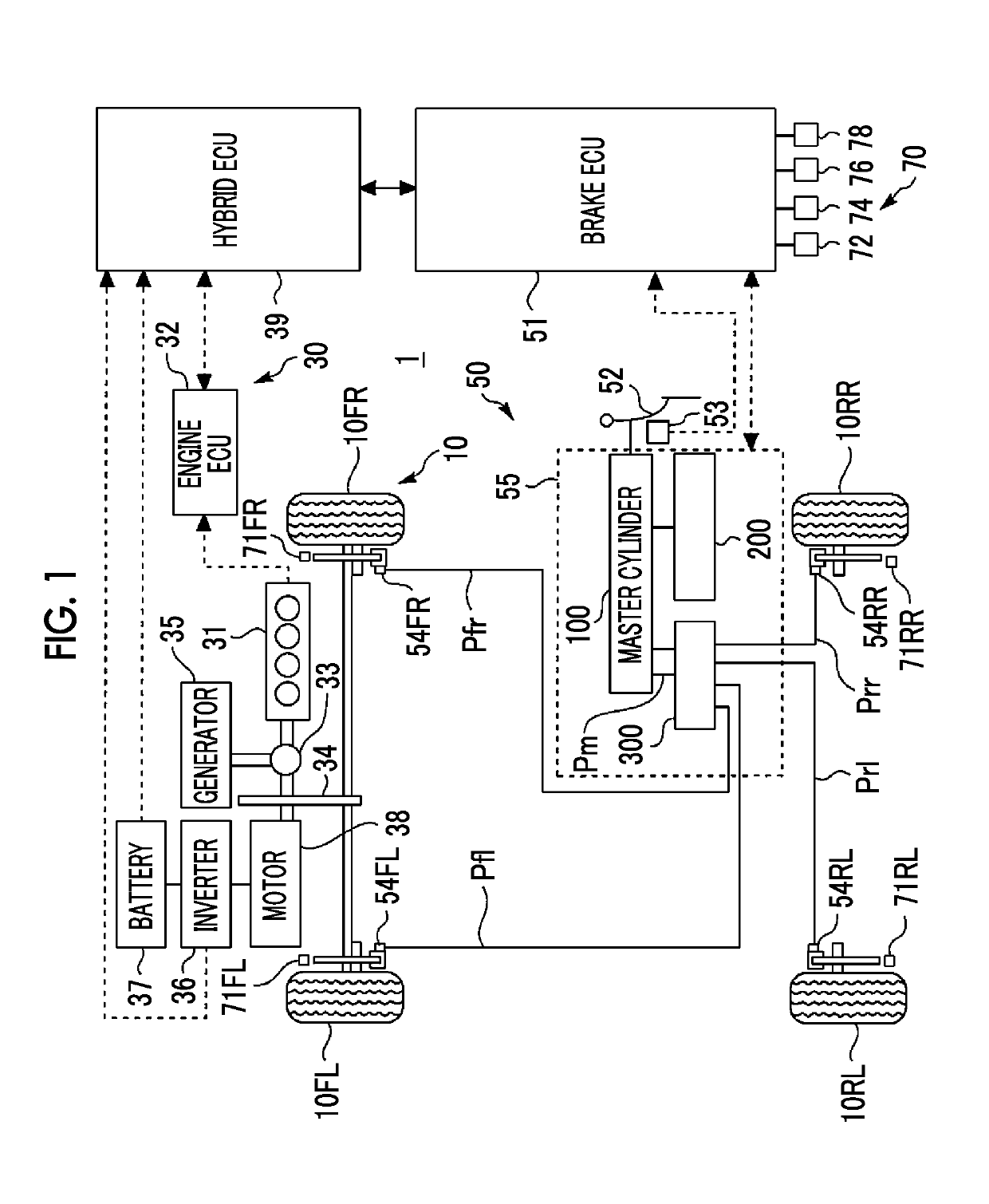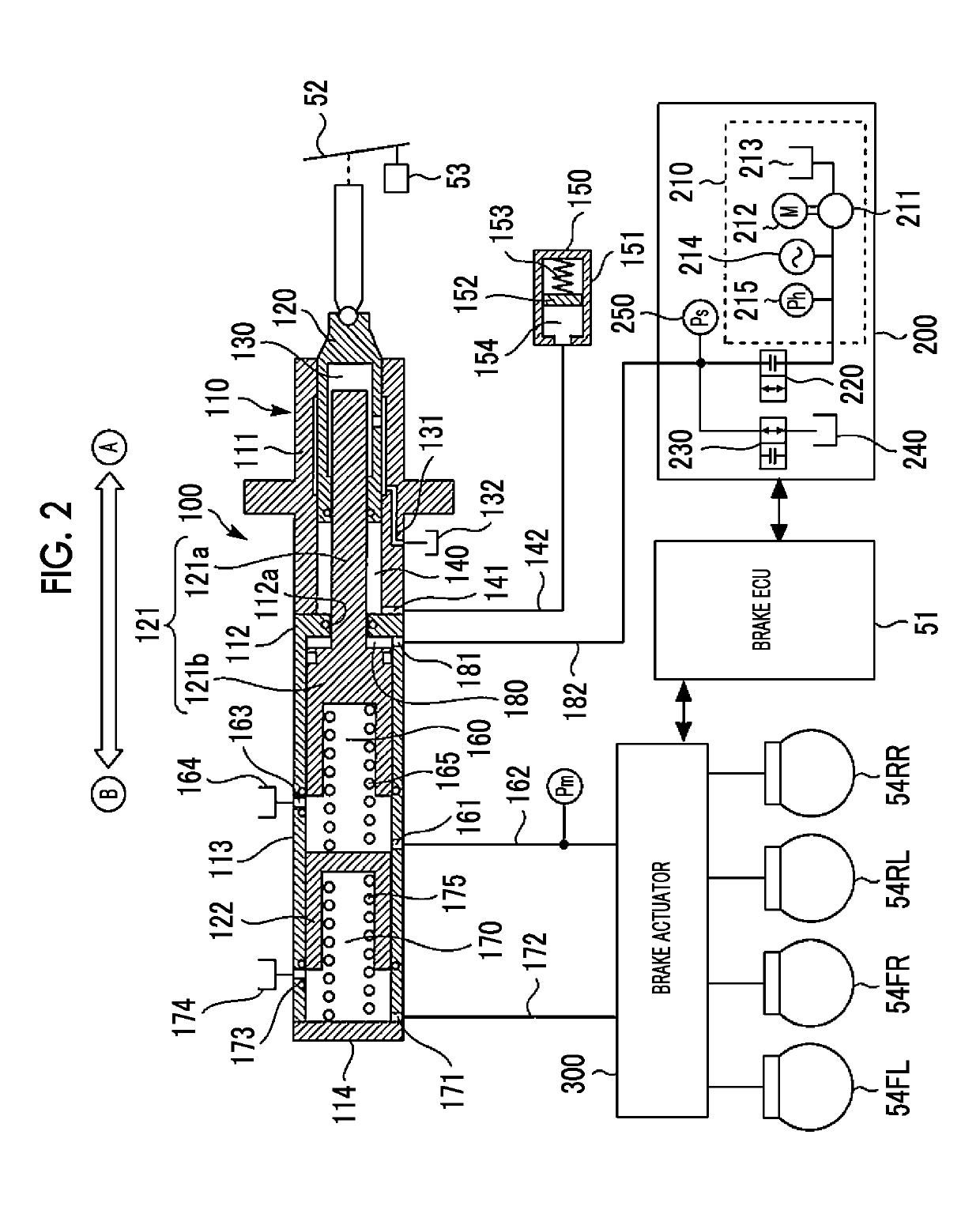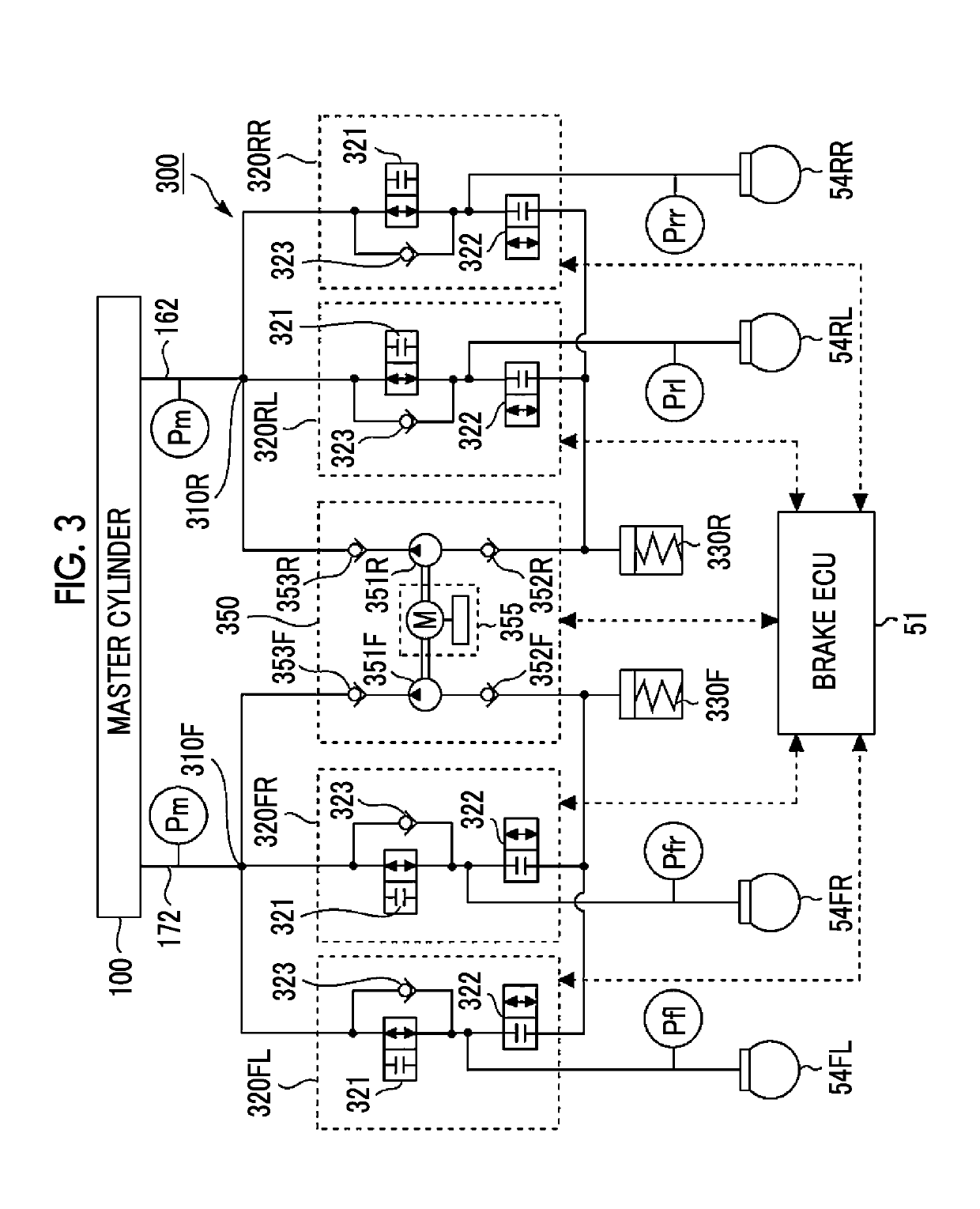Brake control apparatus for vehicle
a technology for controlling apparatus and brakes, applied in the direction of automatic initiation, braking system, transportation and packaging, etc., can solve problems such as degrading safety, and achieve the effect of improving safety, increasing the period of opportunity and executing vehicle stability control
- Summary
- Abstract
- Description
- Claims
- Application Information
AI Technical Summary
Benefits of technology
Problems solved by technology
Method used
Image
Examples
first example
5-1. First Example
[0121]In a first example, the vehicle stability control for canceling oversteer will be described. In step S10 in FIG. 7, the brake ECU 51 determines whether a turning state of the vehicle 1 is the oversteer.
[0122]More specifically, based on the steering angle and a vehicle speed, the brake ECU 51 computes a target yaw rate by a known method. The steering angle is detected by the steering angle sensor 72. The vehicle speed is detected by the vehicle speed sensor 74. Alternatively, the vehicle speed may be computed from the rotational speeds of the front left wheel 10FL, the front right wheel 10FR, the rear left wheel 10RL, and the rear right wheel 10RR, which are respectively detected by the wheel speed sensors 71FL, 71FR, 71RL, 71RR. Furthermore, the brake ECU 51 computes a yaw rate deviation by subtracting the target yaw rate from the actual yaw rate. The actual yaw rate is detected by the yaw rate sensor 78. Then, the brake ECU 51 compares the yaw rate deviation...
second example
5-2. Second Example
[0124]In the above first example, when each of the rear wheels is locked and a slip amount of the rear wheel is increased, an oversteering tendency is promoted. In order to cancel a locked state of the rear wheel, the brake pressure of the locked rear wheel has to be reduced.
[0125]Here, it should be noted that the master pressure Pm has to be reduced in order to reduce the brake pressure in the pseudo mode. In a case of the pseudo mode, the brake pressure is not reduced using the reduction valve 322. This is because, as described above, the pumps 351F, 351R cannot be used and the reservoirs 330F, 330R are possibly full. However, when the master pressure Pm is reduced in order to cancel the locked states of the rear wheels, the brake pressure Pt of the target wheel 10T is also simultaneously reduced. As a result, the essential vehicle stability control is not executed as planned.
[0126]Accordingly, in the second example, locking of the rear wheels is prevented in ad...
third example
5-3. Third Example
[0127]A third example also has a purpose of preventing locking of the rear wheels in advance due to the same reason as the second example. However, in the third example, the outer rear wheel is also set as the target wheel 10T. That is, the target wheels 10T include both of the outer front wheel and the outer rear wheel. Furthermore, a boosted amount of the brake pressure of the outer rear wheel is set to be smaller than a boosted amount of the brake pressure of the outer front wheel.
[0128]A description will be made on one example of a method for changing the boosted amounts of the brake pressure between the outer front wheel and the outer rear wheel with reference to FIG. 8. In FIG. 8, a horizontal axis represents time, and a vertical axis represents pressure. Pof is the brake pressure of the outer front wheel, and Por is the brake pressure of the outer rear wheel. In the period from the time ts to the time te, the brake ECU 51 opens the booster valve 321 for the ...
PUM
 Login to View More
Login to View More Abstract
Description
Claims
Application Information
 Login to View More
Login to View More - R&D
- Intellectual Property
- Life Sciences
- Materials
- Tech Scout
- Unparalleled Data Quality
- Higher Quality Content
- 60% Fewer Hallucinations
Browse by: Latest US Patents, China's latest patents, Technical Efficacy Thesaurus, Application Domain, Technology Topic, Popular Technical Reports.
© 2025 PatSnap. All rights reserved.Legal|Privacy policy|Modern Slavery Act Transparency Statement|Sitemap|About US| Contact US: help@patsnap.com



